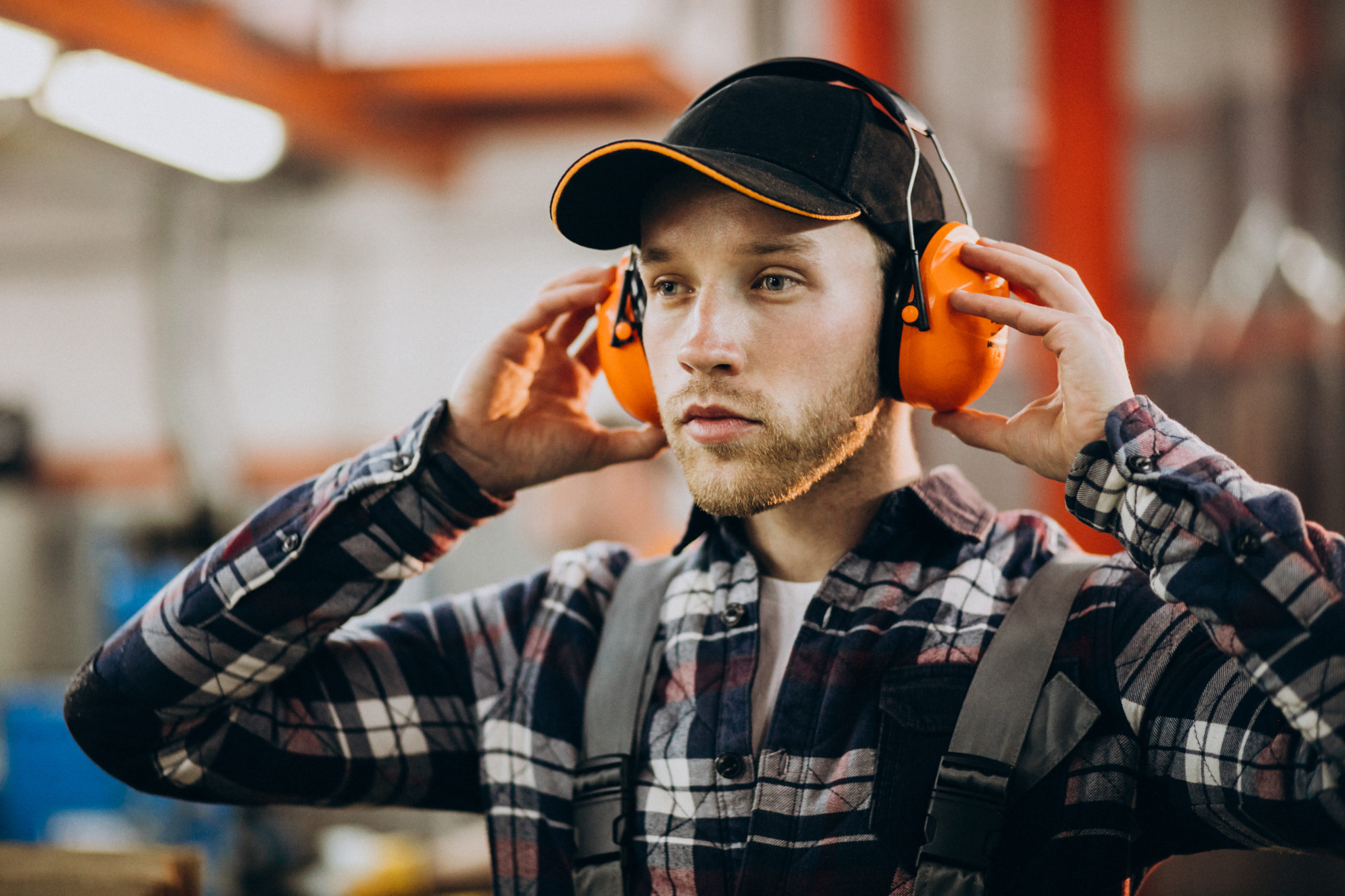Hearing protection
Hearing protection
The selection will depend on the characteristics of the noise (the sound pressure level), the frequency content, the impulsive or non-impulsive characteristics of the noise, the characteristics of the work and of the worker.
The acoustic characterisation of the hearing protector to be included in the information leaflet of the equipment must include:
Attenuation assumed by one-third octave band frequencies from 125 to 8000 Hz.
H-M-L values, overall acoustic attenuations for noise at high, medium and low frequency.
The SNR value, overall acoustic attenuation for flat spectrum noise.
The acoustic characteristics of the protector along with the characterisation of the noise are used to calculate the PNR value, the predicted noise level reduction (difference between the A-weighted sound pressure level of the environment and the effective sound pressure level with protector).

Consult hearing protection regulations
UNE-EN 352-1:2003
Hearing protectors. General requirements. Part 1: Ear-Muffs.
UNE-EN 352-2:2003
Hearing protectors. General requirements. Part 2: Ear-plugs.
UNE- EN 352-3:2003
Hearing protectors. General requirements. Part 3: Ear-muffs attached to an industrial safety helmet.
UNE- EN 352-4:2001 + A1: 2006
Hearing protectors. General requirements. Part 4: Level-dependent ear-muffs.
UNE- EN 352-5:2003 + A1: 2006
Hearing protectors. General requirements. Part 5: Active noise reduction ear-muffs.
UNE- EN 352-6:2003
Hearing protectors. General requirements. Part 6: Ear-muffs with electrical audio input.
UNE- EN 352-7:2004
Hearing protectors. General requirements. Part 7: Level-dependent ear-plugs.
UNE- EN 352-8:2008
Hearing protectors. General requirements. Part 8: Entertainment audio ear-muffs.
UNE- EN 13819-1:2003
Hearing protectors. Testing. Part 1: Physical test methods.
UNE- EN 13819-2:2003
Hearing protectors. Testing. Part 2: Acoustic test methods.
UNE- EN 24869-1:1994
Acoustics. Hearing protectors. Part 1: Subjective method for the measurement of sound attenuation.
UNE- EN ISO 4869-2:1996 + AC:2008
Acoustics. Hearing protectors. Part 2: Estimation of effective A-weighted sound pressure levels when hearing protectors are worn.
UNE- EN ISO 4869-3:2008
Acoustics. Hearing protectors. Part 3: Measurement of insertion loss of ear-muff type protectors using an acoustic test fixture.
UNE- EN ISO 11904-1:2003
Acoustics. Determination of sound immission from sound sources placed close to the ear. Part 1: Technique using a microphone in a real ear (MIRE technique).
UNE- EN ISO 4869-4: 2000
Acoustics. Hearing protectors. Part 4: measurement of effective sound pressure levels for level-dependent sound-restoration ear-muffs.
Note: This standard was harmonised until 20/11/09.
UNE – EN 458:2016
Hearing protectors. Recommendations for selection, use, care and maintenance.
Guidance document. (Endorsed by AENOR in April 2016.)
UNE-EN 960:2007
Headforms for use in the testing of protective helmets.
UNE-EN 13087-1:2000
UNE-EN 13087-1/A1:2002
Protective helmets. Test methods. Part 1: Conditions and conditioning.
EN 13087-2:2012
Protective helmets. Test methods. Part 2: Shock absorption.
(Endorsed by AENOR in November 2012)
UNE-EN 13087-3:2000
UNE-EN 13087-3/A1:2002
Protective helmets. Test methods. Part 3: Resistance to penetration.
EN 13087-4:2012
Protective helmets. Test methods. Part 4: Retention system effectiveness.
(Endorsed by AENOR in November 2012)
EN 13087-5:2012
Protective helmets. Test methods. Part 5: Retention system strength.
(Endorsed by AENOR in November 2012)
UNE-EN 13087-6:2012
Protective helmets. Test methods. Part 6: Field of vision.
(Endorsed by AENOR in November 2012)
UNE EN 13087-7:2001
UNE EN 13087-7/A1:2002
Protective helmets. Test methods. Part 7: Flame resistance.
UNE-EN 13087-8:2001
UNE-EN 13087/A1:2005
Protective helmets. Test methods. Part 8: Electrical properties.
(January 2016)
EN 13087-10:2012
Protective helmets. Test methods. Part 10: Resistance to radiant heat.
(Endorsed by AENOR in November 2012)
EN 16471:2014
Firefighter helmets. Helmets for wildland fire fighting.
(Endorsed by AENOR in April 2015)

